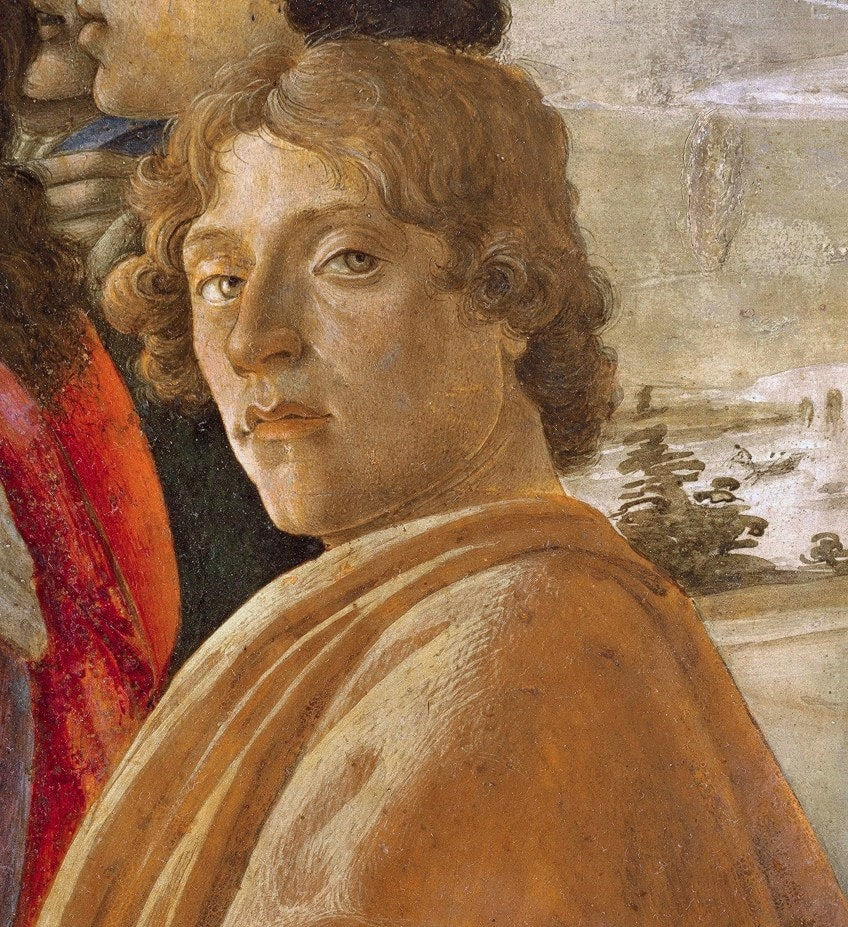Sandro Botticelli was an Italian Early Renaissance painter best known for his famed artworks like Primavera and The Birth of Venus, both stunning masterpieces which showcased his artistic capabilities and foresight in the creation of some of the most iconic and perennial pieces of hallmark Renaissance art.
However, how many of us actually know about the interesting facts about Sandro Botticelli?
In this article, we will delve into the fascinating background of Botticelli’s life and his work as an artist. Here are three interesting facts about the painter which you may not have known.
- Botticelli’s name was actually a nickname given to him by his older brother
While not much is actually publicly known about Botticelli’s birth and early childhood, some sources state that he grew up in a poorer part of Florence, Italy. His father was a hide-tanner, and ‘Botticelli’ was reportedly a nickname of endearment given to him by Giovanni, a pawnbroker who was also one of his four older brothers. It means ‘little barrel’ in Italian.

Botticelli’s signature, via Art In Context
As a young boy, Botticelli was already making a name for himself by being popular with his classmates. He was supposedly an active, fidgety, and temperamental child, with a killer sense of humor and a fondness for puns, all while being known by his teachers as a clever student who was unfortunately prone to drifting off and getting side-tracked during lessons.
- Botticelli worked with some very famous and influential people, including a master of Florentine painting and rich, powerful families of Italy
Botticelli was no amateur, self-taught artist. In fact, he was actually an apprentice to the great master Fra Filippo Lippi in around 1460, having been recognized for his fledgling artistic talent.
His father actually withdrew him from school to send him to a goldsmith to work as an apprentice, but having witnessed Botticelli’s inclination towards painting, his father decided to send him to work under Lippi, who was at that time considered one of the most revered masters of Florentine art.
Lippi taught Botticelli the art techniques of painting panels, fresco, and linear perspective, giving him solid fundamental training in these techniques. Lippi’s Florentine painting style had a huge influence on Botticelli’s own art style as it comprised most of the young apprentice’s foundational teachings in art, and this influence was so strong and deeply seated that it could be glimpsed even in Botticelli’s later artworks, which he created in adulthood. One can see this influence in the famous aforementioned Primavera and The Birth of Venus, where feminine forms and fanciful clothing predominate.


Lippi’s style largely comprised graceful, whimsical lines, pale hues, and elaborately constructed costuming, which could be seen in Botticelli’s work even after he started to adopt stronger color palettes while developing his individual art style. The use of a feminine form and soft colors were most prominently seen in Botticelli’s Madonna artworks.

One of Botticelli’s Madonna paintings, Via MutualArt
Botticelli, while being a conservative painter compared to his peers at that time, was still widely popular in Florence. He was often commissioned by the Medici family, one of the richest and most well-known powerful families in Italy who had contributed greatly to the funding and development of the Basilica of San Lorenzo.
Botticelli’s famed Primavera (1477-1482) and The Birth of Venus (1485) were secular paintings done for Lorenzo Medici, one of their family members. The Medici family owned a large number of his commissioned art pieces in their private collections.
Botticelli also largely lived and produced his artworks in a Via Nuova villa which his father had purchased in 1464. His neighbors also happened to be from another powerful family, the Vespuccis, who were ardent Medici family supporters and who also commissioned many works from Botticelli as well.
The Vespuccis commissioned the earliest-known surviving fresco done by Botticelli, Saint Augustine in his Study (1480) which is located in the Church of Ognissanti in Florence today.

St Augustine in his Study (1480), via ThoughtCo
- Botticelli only has one known alleged self-portrait, which was actually included in a commissioned painting for a church
One of Botticelli’s earliest commissioned church artworks for the Church of the Santa Maria Novella included the only known self-portrait of him. The artwork, titled Adoration of the Magi (1475) included portraits of several members of the influential Medici family and an alleged portrait of himself - the figure in the orange-brown robe looking back at the viewer, standing in the far right-hand corner of the painting (below).
In those days, it was not uncommon for powerful members of powerful families like the Medicis to be included in important commissioned pieces, since they had connections to many central people and institutions in the country. In such artworks, the artists would also sometimes include portraits of themselves as secondary figures.


Botticelli lived and worked in Florence for most of his life, with the exception of trips taken out to Pisa and the Sistine Chapel to work on major projects. He died in 1510 and most of his surviving oeuvre of artworks are now housed in the Uffizi Gallery in Florence, Italy.
Having learned a few interesting facts about Botticelli, we can better appreciate and understand how he created his artworks, and what the stories behind these artworks are. Botticelli’s mark on Italy’s art history is a prominent one. His paintings and their influence on subsequent generations of art styles continue to promulgate his legacy long after his death.




